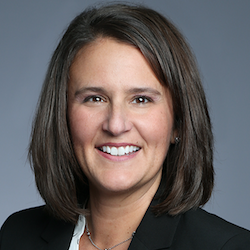

“Fierce headwinds” will keep blowing for long-term care providers in 2023, according to specialty investment bank Ziegler. Inflationary pressures and workforce challenges are still in play, but reasons for hope exist.
“For many, they see the current environment as one that is ripe for growth, and they are boldly moving forward with affiliation and acquisition opportunities, campus expansion projects and revenue diversification initiatives,” Lisa McCracken, Ziegler’s director of senior living research and development, wrote in the bank’s latest newsletter. “At the same time, some are hitting pause on planned projects due to inflation, while others are hitting the reset button because they may be in need of organizational repositioning to remain viable long-term.”
As the latest quarterly data from the National Investment Center for Seniors Housing & Care show, occupancy rate across all three senior living service/care segments — independent living, assisted living and memory care — increased for the sixth consecutive quarter due to continued strong demand that outpaced inventory growth. The highest occupancy gains were seen in assisted living. McCracken, however, noted that “gains in revenue are being offset by inflationary pressures.”
Wages
As the McKnight’s Business Daily previously reported, 27 states rang in the new year with increases or planned increases to their minimum wage rates. Most took effect Jan. 1, but others will become effective later in the year. In addition to wage increases, McCracken said, providers are continuing to pay more for supplies.
“It is more important than ever for provider organizations to be prudent with fee increases as well as entrance-fees,” she wrote. “You cannot price yourself out of the market, but you cannot also create a greater deficit if increased occupancy costs you more than it brings you.”
Staffing
Although staffing shortages continue to vex senior living and skilled nursing providers, according to McCracken, those challenges should be alleviated somewhat in 2023. Some providers have found it necessary to downsize to offset the shortages. Many already have reduced their reliance on temporary staffing agencies.
“We are going to need to continue to reinvent in this space, whether it be alternative staffing models, revisiting the type of person we hire, the integration of workforce technologies, or even workforce housing,” McCracken wrote.
Technology
McCracken predicts that technology will play an even greater role this year than previously. No longer something “nice to have,” she wrote, technology must be something providers stay abreast of to compete.
Consolidation
Companies are expected to continue to grow through consolidation. At the same time, McCracken said that there likely will be a continued trend of sales of nursing-centric or financially distressed not-for-profits to private-sector buyers this year.
Regulations
The regulatory environment has gotten more difficult, and reimbursement levels don’t always cover the cost of care.
“The handful of states who have put forth Medicare or Medicaid increases in 2023 are welcome, but are simply narrowing the existing financial loss,” McCracken wrote.
Business models
Alternative business models are needed, according to McCracken. Those alternatives could include adding services, such as pharmacies, behavioral health, rehabilitation or physician services, she said.
“We need to think creatively, finding the right intersection between the business mind and the heart of the mission,” she wrote.
Hospitals / post-acute care collaboration
Strong relationships between hospitals and skilled nursing providers is essential, as both types of providers face the same economic challenges, according to McCracken.
“Hospitals are actively working to remedy these challenges and it is prudent for senior living [skilled nursing] organizations to have a seat at that table,” she wrote.
Capital costs
Corporations will need to keep an eye on capital costs, which are now at 20-year averages after a decade of record-low cost of capital and lower interest rates, according to the expert.
“We predict that in 2023, a proportion of providers will continue to move forward with campus (re)development projects, while others might scale back plans to be smaller than originally planned or executed in multiple phases,” McCracken wrote.
The trends that unfold in 2023 will be “fairly universal” across provider organizations, she predicted.


